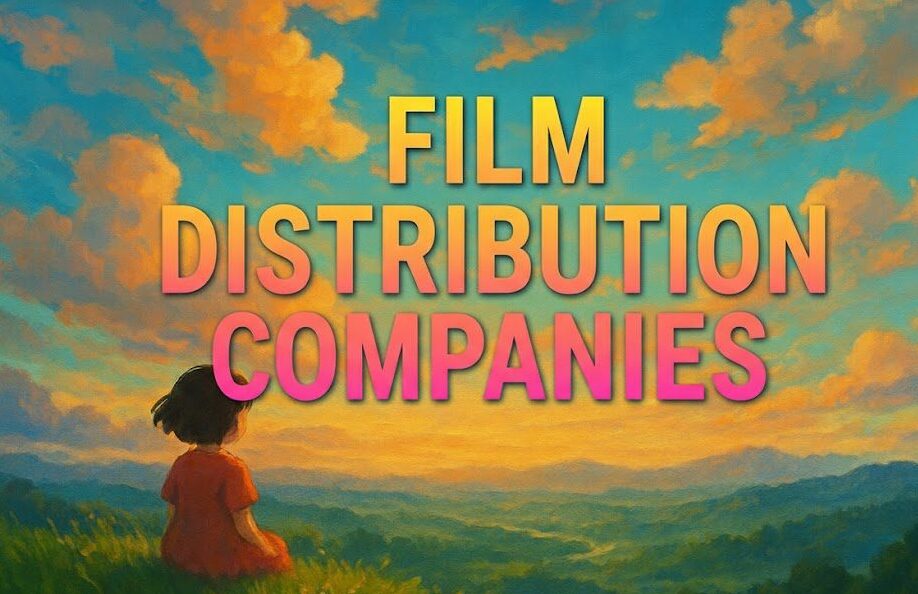Introduction
You have a killer idea for a TV series. A concept that could be the next big thing. But there’s one giant wall you keep hitting: money. It’s the age-old problem that stops incredible stories from ever reaching the screen.
You’re wondering how to fund a TV series when you’re competing with industry giants. Where do you even begin?
It feels overwhelming, right? You’re not just a creative anymore; you have to become a master financier, a global negotiator, and a strategic genius. The good news? It’s not impossible. In fact, producers are getting their shows financed every single day using a combination of smart, proven strategies.
In this post, I’m going to walk you through the exact funding models and actionable steps you can use to get your TV series off the ground. No fluff, just practical advice to turn your script into a funded, production-ready project.
Table of content
- Introduction
- Key-Takeaways
- Step 1: Build a Bulletproof Pitch Package (Your Funding Foundation)
- Step 2: Understand the Core Funding Models
- Step 3: The Power of Pre-Sales and Distribution Advances
- Step 4: Go Global with International Co-Financing
- Step 5: Maximize Your Budget with Tax Credits and Incentives
- How Vitrina Accelerates Your Funding Search
- Conclusion
- FAQs
Key Takeaways
| Strategy | What It Is | Best For |
|---|---|---|
| Build a Bulletproof Package | Creating an irresistible pitch deck, bible, and sizzle reel. | All creators, at every stage. This is non-negotiable. |
| Master Diverse Funding Models | Combining equity, debt, and “soft money” like grants. | Producers looking to de-risk the project for investors. |
| Leverage Pre-Sales | Selling distribution rights to territories before production. | Projects with strong genre appeal or known talent attached. |
| Explore Co-Financing | Partnering with international companies to pool resources. | Larger budget projects that have global appeal. |
| Utilize Tax Credits | Using government incentives to cover a percentage of your budget. | Productions that have flexibility on where they can shoot. |
Is your TV series package ready for buyers?

Step 1: Build a Bulletproof Pitch Package (Your Funding Foundation)
Before anyone gives you a single dollar, they need to believe in your project. A great idea isn’t enough. You need to present it in a professional, compelling package that answers every question an investor might have. This is your foundation. Don’t skip this.
What You Absolutely Need:
- The Pitch Bible: This is the soul of your show. It details the world, characters, season-long arcs, and episode summaries. It proves you’ve thought everything through.
- The Pitch Deck: This is the visual, condensed version of your bible. It’s a powerful, 10-15 slide presentation with stunning visuals, key plot points, character intros, and, crucially, the budget top sheet and financing plan. It needs to look professional.
- The Sizzle Reel: A 2-3 minute trailer that sells the tone, style, and energy of your show. It can be a concept reel, animated storyboard, or select scenes. It must create an emotional connection and leave them wanting more.
Your package must scream, “This is a safe bet.” It shows you respect their time and their money. Without it, you won’t even get in the door.
Step 2: Understand the Core Funding Models
Funding isn’t a single check from one source. It’s a patchwork quilt you stitch together. Understanding the different types of money is critical to building a realistic budget.
The Main Buckets of Money
- Equity Financing: This is cash from private investors, investment funds, or production companies in exchange for an ownership stake in your series. They are taking a big risk, hoping for a big return. You need a rock-solid business plan to attract them.
- Debt Financing: This is essentially a loan you have to pay back. It’s often secured against pre-sales contracts or tax credits. It’s less risky for the financier, but you need to have other elements secured first.
- Soft Money (The “Free” Money): This includes government grants, film funds, and cultural incentives. It’s highly competitive but amazing because you don’t have to pay it back or give up equity.
Most successful TV series use a hybrid model, combining all three. Your job as a producer is to figure out the right mix for your specific project.
Step 3: The Power of Pre-Sales and Distribution Advances
So, how do you secure that debt financing or convince equity investors? You show them the money is already on its way. That’s where pre-sales come in.
A pre-sale is a contract with a distributor or broadcaster in a specific territory to buy the rights to your show before it’s even made. You can then take that contract to a bank to get a loan against it. It’s a massive vote of confidence.
How to Approach Pre-Sales:
- Identify Your Target Markets: Which countries would love your show? A historical drama might do great in Europe, while a sci-fi series could have huge appeal in Asia.
- Find the Right Sales Agent: A good sales agent has the relationships with international buyers. They know who is buying what. They are your key to unlocking this strategy.
- Get a Minimum Guarantee: This is an advance on sales from a distributor. It’s cash-in-hand that you can use for your production budget.
The more pre-sales you can secure, the less equity you have to give away. It proves there’s a real market for your series.
Don't let your next hit show go unfunded.

Step 4: Go Global with International Co-Financing
For bigger budget shows, co-production is often the only way. This is where you partner with a production company in another country to share the costs, risks, and creative input.
Why is this so powerful? Because if you partner with a UK company, for example, your project may become eligible for the UK’s generous tax credits and broadcast funding. You are essentially pooling sovereign money.
Key Considerations for Co-Production:
- Official Treaties: Many countries have co-production treaties that make this process seamless. Look for countries that have treaties with your own.
- Finding the Right Partner: Your co-producer should bring more than just money. They should have creative strengths, access to local talent, and a strong reputation.
- Shared Creative Control: Be prepared to share control. A co-production is a true partnership, and you’ll need to make decisions together.
Navigating co-productions can be complex, but it opens the door to bigger budgets and a built-in international audience.
Step 5: Maximize Your Budget with Tax Credits and Incentives
This is a game-changer. Dozens of countries, states, and provinces offer tax credits or rebates to productions that shoot in their territory. This can be a significant portion of your budget—sometimes up to 40% or more!
This isn’t just for Hollywood blockbusters. Many incentives are designed to attract independent series. You hire local crews, spend money at local businesses, and in return, the government gives you a check.
How to Leverage Tax Credits:
- Research Locations: Don’t just pick a location for its look. Research which locations offer the best and most reliable incentives for your budget level.
- Understand the Rules: Every program is different. Some require you to hire a certain percentage of local cast and crew. Others have minimum spending requirements. Read the fine print.
- Hire a Local Expert: It’s often wise to hire a local production manager or accountant who specializes in the tax credit application process. They will save you time and money.
By structuring your production around a strong tax incentive, you make your project vastly more attractive to private investors.
How Vitrina Accelerates Your Funding Search
Putting all these pieces together requires a massive amount of research, networking, and outreach. Finding the right sales agents, identifying potential co-producers in Germany, or discovering distributors in South Korea can take months.
This is where a platform like Vitrina becomes a critical tool. Instead of cold-calling or relying on outdated lists, you can use a centralized global marketplace to identify and connect with vetted partners.
It helps you find companies that are actively looking for projects like yours, analyze their past work, and connect with key decision-makers, dramatically cutting down your fundraising timeline.
Conclusion
Funding a TV series is a marathon, not a sprint. It’s a strategic process that combines a stellar creative package with a smart, diversified financial plan. You need to stop thinking like just a writer or director and start thinking like a CEO.
By building a bulletproof package, understanding the different funding models, leveraging pre-sales, exploring co-productions, and maximizing tax incentives, you move from “hope” to “strategy.” You create a project that is not just creatively exciting but financially viable.
What’s the first strategy you’re going to try? Let me know in the comments.
Ready to stop searching and start connecting? Fast-track your funding journey by finding the right partners for your TV series. Get your Vitrina Membership today!
Frequently Asked Questions
While not strictly necessary, a reputable agent or entertainment lawyer provides immense value. They have established relationships with studio executives, financiers, and buyers, and they can get your pitch package read by the right people. They also provide crucial credibility.
You shouldn’t guess. You need a detailed, line-by-line budget created by an experienced line producer or production manager. Your budget should be realistic for your concept and the talent you can attract. Asking for too much or too little can immediately discredit your project.
Both are important, but they serve different functions. A brilliant script is the foundation for a great show. Attaching a known actor (or “talent”) is a de-risking strategy. It gives investors and distributors confidence that there’s a built-in audience, making it easier to secure pre-sales and financing.
Beyond film markets like Berlinale or MIPCOM, using a professional network is key. B2B discovery platforms focused on the M&E industry, like Vitrina’s solutions, allow you to filter and search for production companies by country, genre focus, and budget level, helping you create a targeted list of potential partners.






































